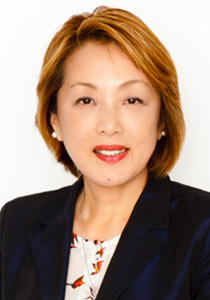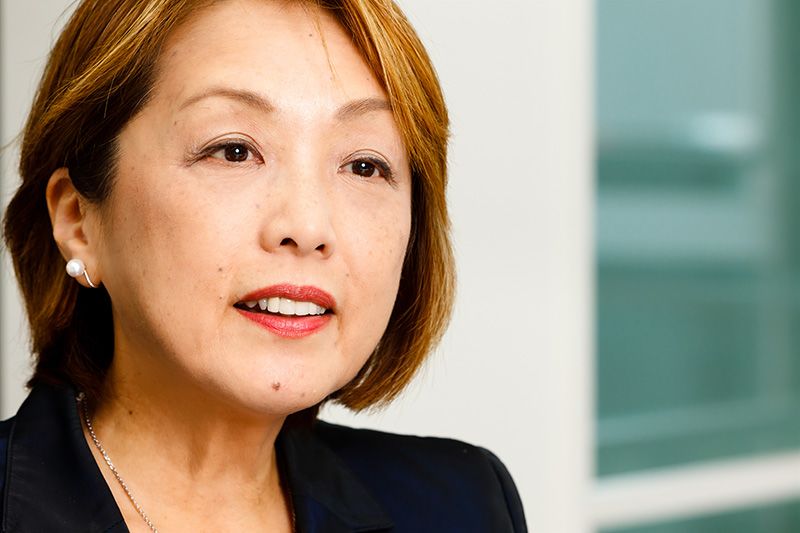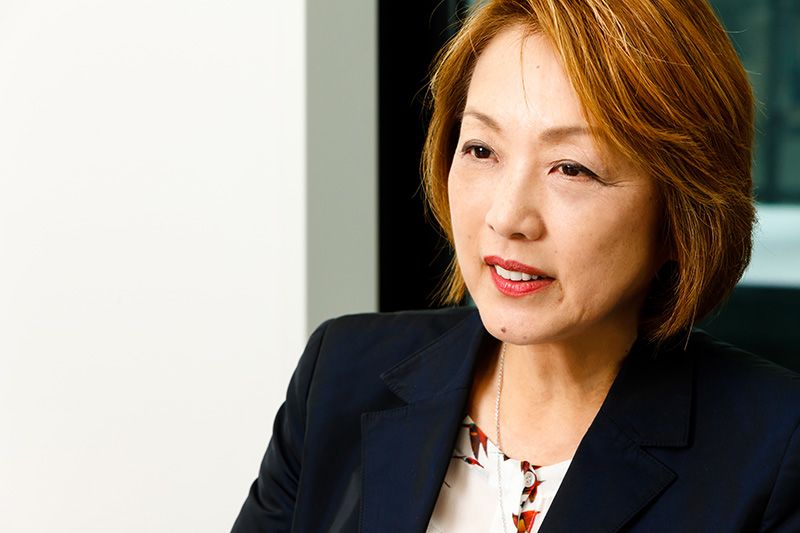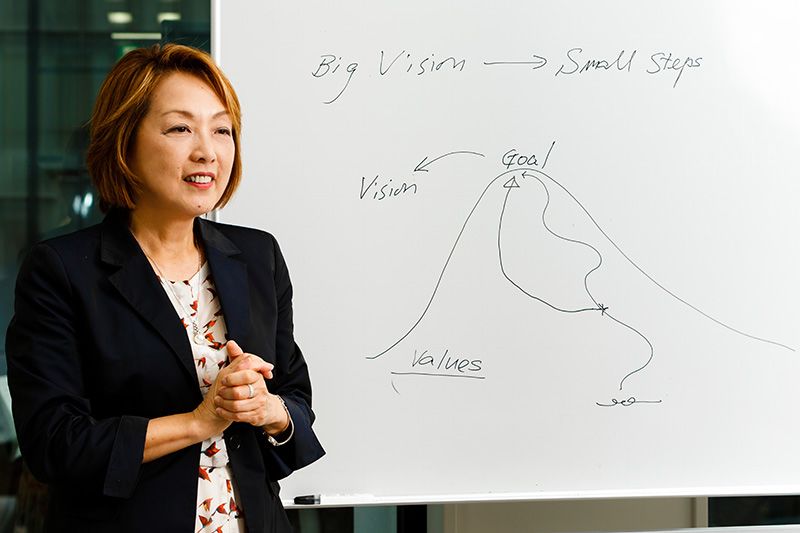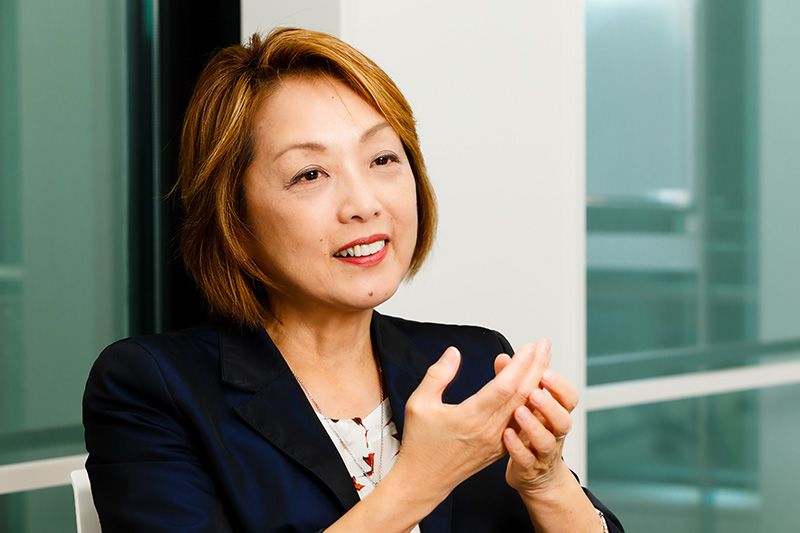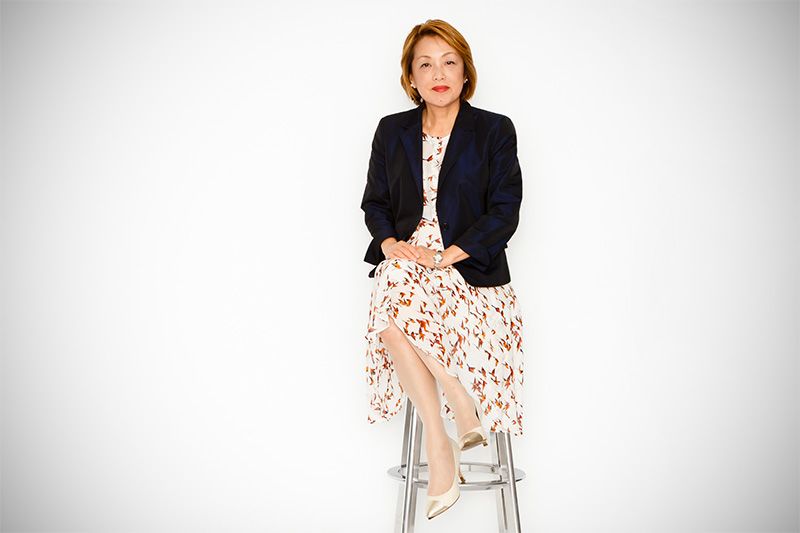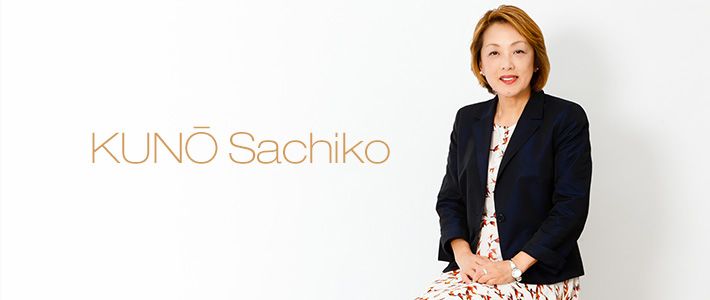
Kunō Sachiko: Fostering Talent to Change the Future
Society- English
- 日本語
- 简体字
- 繁體字
- Français
- Español
- العربية
- Русский
Kunō Sachiko launched two bioventures in Japan and the United States, amassing a net worth of $330 million. In 2015 she became the only Japanese to be featured in “American Dreamers,” a special feature in Forbes magazine focusing on foreign-born women who had made their fortunes in the United States. Always seeking new challenges throughout her life, the Washington DC–based Kunō stepped back from the frontlines of the bioventure business to focus on the S&R Foundation, which she founded with her colleague Ueno Ryūji in 2000, helming the foundation as CEO. Through the foundation’s Halcyon Incubator, she is working daily to help young social entrepreneurs, scientists, and artists get the boost they need to succeed in their careers.
From Biotech to Entrepreneurism
The one constant in Kunō’s life has been change. Yet her dynamic story—a journey that has taken her from scientific research to entrepreneurism to now supporting creative young talent in the United States—gives no hint that she was once a shy young girl growing up in a small town in Yamaguchi Prefecture. Yet despite her timidity, the young woman also showed a quick aptitude for mathematics and physics. When it came time to go to college her choice was clear. “I thought that if I picked the sciences, I could spend a lot of time in the lab running experiments and I wouldn’t have talk with anyone,” Kunō remembers today. “To me, that sounded perfect.”
While recent years have seen an increase in the number of Japanese women pursuing the sciences in college, the overall percentage of woman scientists in Japan remains low by international standards. In the 1970s, women choosing to pursue science in college were the minority. When Kunō was accepted to Kyoto University’s Faculty of Engineering, only 6 of its 1,000 students were female. Yet she persisted, and in her senior year she decided to pursue advanced studies in an emerging field that was drawing growing attention at the time: biotechnology.
That choice had already set Kunō apart. In her second year of graduate school, she made another bold choice, deciding to go to Germany and spend a year conducting postdoctoral research at the Technical University of Munich. It proved a turning point in her perceptions and in her life.
“In Germany, I met many women scientists who had made the kinds of life choices that would have been unthinkable in Japan at the time,” Kunō recalls today, “It made me realize that there was another life path out there that I could follow, one where I could earn money and support myself doing the things that I truly loved as a researcher. Back in those days in Japan, even many of the women who earned PhDs still had little choice but to become housewives once they married.”
After returning to Japan with this newfound confidence and receiving her own PhD from Kyoto University, Kunō worked for several years at the Mitsubishi-Kasei Institute of Life Sciences before signing on as a research scientist with the Research Development Corporation of Japan (JRDC, which later merged into today’s Japan Science and Technology Agency). It was there that she met the man who would become her future business partner, Ueno Ryūji.
In the process of working to crack the molecular mechanisms behind sleep, memory, and learning, Ueno discovered what would later become the platform for two new successful drugs: the therapeutic properties of a class of fatty acids called prostones. Prostones play a special role in repairing cells in the human body, and both Ueno and Kunō wanted to find the quickest way to bring them to patients. In 1989 the two scientists left the JRDC to start up their own company.
“Our work was discovery driven. Incredibly interesting. I became totally absorbed in it,” says Kunō today. “I didn’t worry about the future. I figured we could think about that while we were doing the R&D.”
At the time, their new firm was an intrapreneurial rather than entrepreneurial undertaking, as the two researchers continued their work with funding from Ueno Fine Chemicals Industry, owned by Ueno’s father, along with working space provided in one corner of the plant. Their relentless dedication paid off, and in 1994 Ueno and Kunō brought to market a new treatment for glaucoma, the eye-drop medicine Rescula. Today Rescula has been approved for use in 45 countries around the world, and at its peak was a hit product generating annual business worth more than ¥10 billion.
Embracing the American Entrepreneurial Ecosystem
Developing a new drug is dauntingly difficult. It is said that it usually costs some ¥100 billion per successful drug, with a final success rate of only one in 100,000 attempts. With their successful first effort in Japan, Kunō and Ueno had turned that conventional wisdom on its head. Yet as they entered their next round of new drug development they were still in debt to Ueno Fine Chemicals to the tune of ¥80 billion, and knew that they could not count on much assistance from that quarter.
In 1996, they finally decided to take the leap, and relocated to the United States where it was easier to raise venture capital. They promptly founded their own new company, Sucampo Pharmaceuticals.
In making this bold move, Kunō and Ueno took advantage of the lessons they had learned from an earlier, intensely frustrating experience. “In 1981 the first reports about what came to be known as the AIDS syndrome started coming in from the field, and the United States was working desperately to develop an anti-AIDS drug,” explains Kunō. “In fact, prior to our work on Rescula, we had actually tried developing an anti-AIDS drug of our own.” In 1988, Kunō went on her own to the United States, where she negotiated with the Food and Drug Administration and the National Institutes of Health. “We got permission to go ahead with clinical trials at a hospital in San Francisco,” she remembers, “but unfortunately our drug proved ineffective.”
The failure of their drug to make a difference for the patients, Kunō says, “was incredibly frustrating. Yet the experience we had during the drug trials, especially the open information sharing among the FDA, the NIH, the doctors, and even the patients themselves in America, suggested to us the possibilities for new drug development in the US environment.”-
After the big move, the duo raced to raise money, and in 1999 they launched clinical trials for what proved to be their successful new drug Amitiza, used for the treatment of chronic idiopathic constipation in adults.
An “Incubator” for Young Talent
Once Sucampo was finally listed on Nasdaq in 2007, Kunō began to feel ever more strongly that she had already done all that she needed to do in pharmaceutical development.
“Creating a new drug can take fifteen years,” she says. “I knew that at that point in my life I would never have another chance to develop another drug myself, and I felt as if I had lost my purpose. I wanted to test my hand at something new and different. We had been working in the United States since 1996, and so many different people along the way had helped us succeed. I realized that the time had come to give back to American society for all that we had gained from it.”
What Kunō set her sights on was a mechanism for supporting young talent. She and Ueno had already founded the nonprofit S&R Foundation in 2000, which supported talented young social entrepreneurs, scientists, and artists through its S&R Awards. Yet Kunō felt that it was time to do something more substantial than simply handing out awards, and to launch a bigger and more ambitious project. At the same time, she found herself in increasing demand for advice from struggling young entrepreneurs who had just started up companies of their own.
“I was often asked if, back when we were still in drug development, if I had ever been afraid to take such big risks,” says Kunō. “But for whatever reason, I never felt afraid. When I tried studying management later, I found that I was one of those people strong in what the management experts call ‘self-efficacy.’ Self-efficacy is the belief that, when you run into problems, you can keep the project moving, even if it’s just you alone. I found that even if your confidence may be unfounded, just so long as you can keep the ‘top of the mountain’ you are climbing toward in sight, then somehow you will find that a road will open up for you. That was the message I wanted to pass on to a younger generation.”
One of the things Kunō has come to believe from her own time in Munich and the United States is that for young people to feel inspired and improve their self-efficacy, they need to have an opportunity to share the same space and time with all kinds of people from many different backgrounds in a place set apart from the hurly-burly of everyday life. “By meeting up with someone in a completely new place, with just the right timing, you feel what I would categorize as ‘good stress,’” says Kunō. “And from that good stress is born creativity and innovation.”
Driven by this belief, Kunō first set her hand to finding a location for the new project and constructing a “startup ecosystem” to support young talent. What caught her eye were two historical building in Washington DC’s staid Georgetown district. She and Ueno purchased the nineteenth-century Evermay estate and eighteenth-century Halcyon House to be home to the residential-style “incubator.”
Putting Society Before Fortune
In 2012 Kunō stepped down completely from Sucampo’s business activities and moved the headquarters of the S&R Foundation into Evermay. Two years later, in 2014, she opened the Halcyon Incubator as a residential program to support social entrepreneurism.
Treating the first three years of the undertaking as a pilot project to test out the concept, the foundation provided all the funding. In the program each “cohort” of participants, made up of eight young people, spent five months living together at the Halcyon Incubator. They could continue to use the facility afterwards as their startup’s office space for an additional 13 months. In other words, there would always be 16 people living or working together in the facility. During this period, investors, lawyers, accountants, and other experts working pro bono would drop by to visit the incubator participants. The program was designed to enable the participants to consult experts about all aspects of launching a successful start-up.
“The social impact model is a business model for generating both profits and positive social impact. It takes time to get up and running,” explains Kunō. “That’s why a place like Halcyon is needed in the early stages of a startup.” She adds that the incubator’s location in Washington DC—home to many scholars, policymakers, and think tanks—also offers Halcyon participants opportunities to meet and mingle with influential decision makers unparalleled in almost any other city in the world.
“Among the so-called ‘millennials’ in the United States, the generation of people who are around 35 years old today, there are many people who are more interested in trying to make the world a better place through the work they do than they are in simply making money,” says Kunō. “At least eight out of every ten young people with a good education say they want to start their own companies, and the majority of those are interested in pursuing ‘cause-driven’ social businesses. Even in the United States there aren’t that many residential incubators, so Halcyon has been drawing a lot of attention in Washington. We received applications from 300 people from across the United States for the eight openings in our program. People are saying that the competition to get into Halcyon is more intense than trying to get into Stanford or Harvard.”
Of the 50 or so entrepreneurs that have passed through Halcyon to date, there has been just one participant from Japan. She is Yōko Sen, a digital music artist who has launched a project she calls Sen Sound. Sen Sound is an experiment in taking the noises that patients hear in a hospital and electronically converting them into less grating sounds as a way of reducing patient stress. The number of hospitals partnering with Sen Sound is growing already.
Many other creative projects are underway with Halcyon’s assistance. “One of our policies is to help our participants patent their work quickly, and we have patent lawyers dropping in virtually every day,” says Kunō. “For example, one team developing headphones that help prevent motion sickness when riding in cars or operating in virtual reality environments applied for their patent while they were still based here at the Halcyon facility. I understand that just a week ago their patent was approved. A couple of global IT companies applied to patent virtually the same idea, but the Halcyon-supported team had beaten them to the punch.”
In January 2017, Halcyon obtained 501(c)(3) nonprofit status, opening the doors for broader fundraising efforts in the future. As a new project, Kunō has now purchased a third historic building in Georgetown, the old Fillmore School, and is working to remodel it into an incubator for young artists in many disciplines that will be called the Halcyon Arts Lab.
A Ceaseless Quest for Social Impact
While Kunō herself invested in various Halcyon projects and gathered the support of other investors, she discovered one shocking fact. Even though the ratio of female entrepreneurs to male entrepreneurs at Halcyon is reasonably equal, at 40% versus 60%, Kunō found that women outside the incubator faced tremendous challenges in raising capital.
“Even in the United States, the percentage of venture capital funding going to women-led startups is still only 3 percent of total startup investment,” says Kunō. “Similarly, the percentage of woman holding positions in companies that give them the discretionary power to make these investment decisions is only 6 percent; the remaining 94 percent are all men. In short, there is pre-existing bias against women-led startups on the investment side.”
To raise more capital for women-led startups, she realized, it would first be necessary to train a new generation of female investors. Kunō has now launched a consortium of women investors operating principally in the Washington area called WE Capital. Within just a few months of its launch in December 2016, WE Capital had already raised approximately $2 billion in investment capital.
Constantly extending her network of contacts from her base in Washington DC, building “ecosystems” to support the next generation in building sustainable social businesses, and promoting social-impact investing, today Kunō continues to build on her long career and experience as a woman in both the sciences and the business world to help young individuals’ talents bloom and to devote the fruits of their labors to building a better society.
(Originally written and published in Japanese on September 13, 2017. Interview and text by Itakura Kimie of Nippon.com. Photos by Miwa Noriaki.)